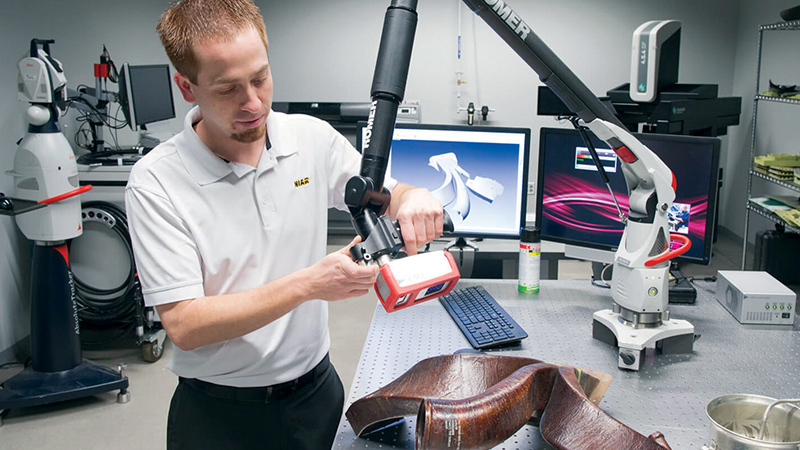Stay Up to Date
Submit your email address to receive the latest industry and Aerospace America news.
Now that Dassault Systems, the France-based engineering software company, has opened its 3D Experience Center in Kansas together with Wichita State University and the National Institute for Aviation Research, clients are expected to perform ground-breaking design research, starting with Airbus, which almost simultaneously dedicated a new building at the university’s Innovation Campus.
Dassault and its partners describe the center as a place where the virtual and real worlds of the aerospace industry are combined in a center that doubles as an educational facility for WSU. Designs can be developed in computer simulations and then these can be 3-D printed and tested.
Dassault expects to work closely with Airbus, but if all goes as planned, that will just be a start. “The university is working on bringing another 30 Airbuses here,” said Michel Tellier, vice president of aerospace and defense for Dassault, speaking to reporters before the April opening. The center’s partners showed off the facility to industry executives and journalists. The site has six spaces to move clients through the process of development and production design.
This setup “lets you virtually innovate and then to go to another lab [in the center] to physically get to where you want to go,” explained Dassault’s Brian Christensen. Addressing the industry attendees, Christensen said designers have “set an audacious goal to make a dramatic reduction” in program lifecycle costs and “you’re going to need process guidance and collaboration to do that.”
Attendees were shown the concept refinement lab, where materials can be virtually evaluated for properties including elasticity, strength and thermal characteristics. That data will help engineers define the kind of physical models required for efficient testing, which should save time and money.
Attendees also visited the 3D CAVE, a high-definition virtual environment where clients can simulate manufacturing processes. “The ultimate goal is prove out the entire mission and system before you have to build something,” said Jeff Fisher, the 3D CAVE manager and a NIAR employee. Once a client provides the 3-D design, he says, a simulation model can be created “by the time you drive here.”
To make the case, the presenters showed attendees a drone and its gimbal camera mount that were made at the center. They explained that the original gimbal was redesigned and 3-D printed to reduce the drone’s weight by 200 grams.
The drone was assembled in the center’s multirobotic additive manufacturing space, where six multifunction robots work together on an assembly line, helping clients envision what a NIAR staffer called the “factory of the future.”
About Joe Stumpe
A freelance reporter based in Wichita, Kansas, Joe has written for The New York Times, Agence France-Presse and The Huffington Post.
Related Posts
Stay Up to Date
Submit your email address to receive the latest industry and Aerospace America news.




